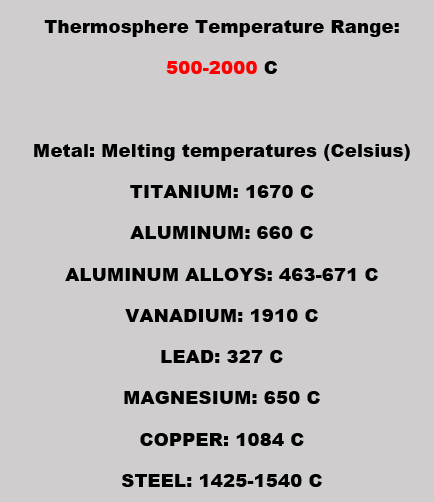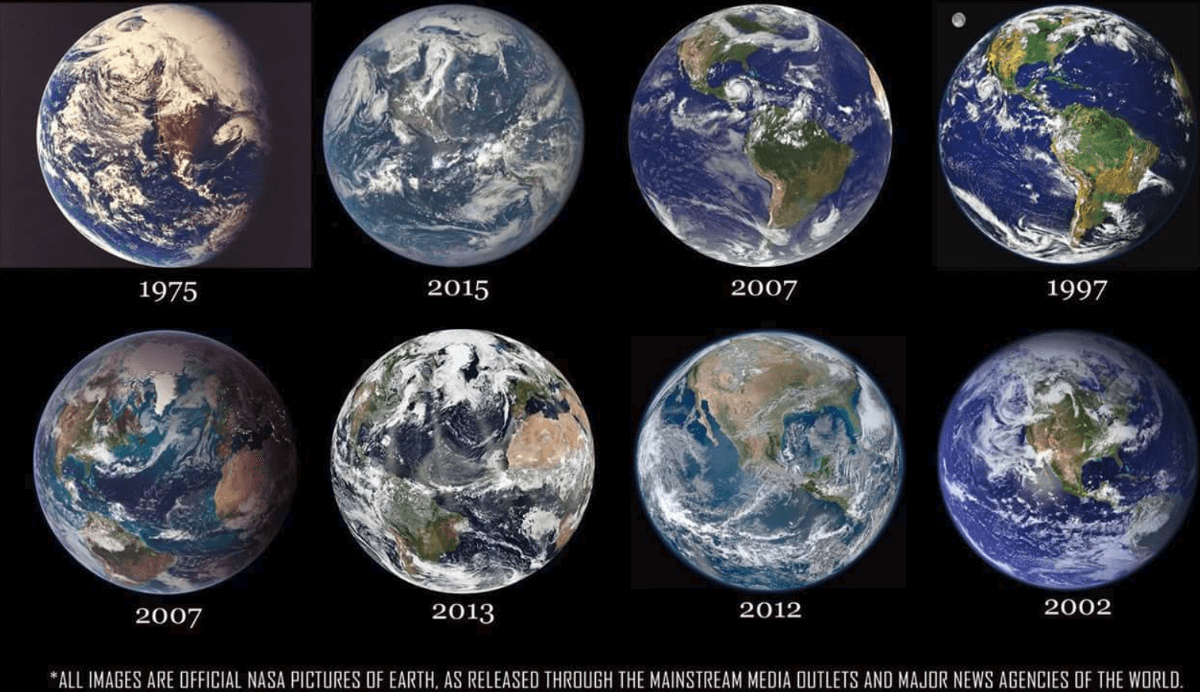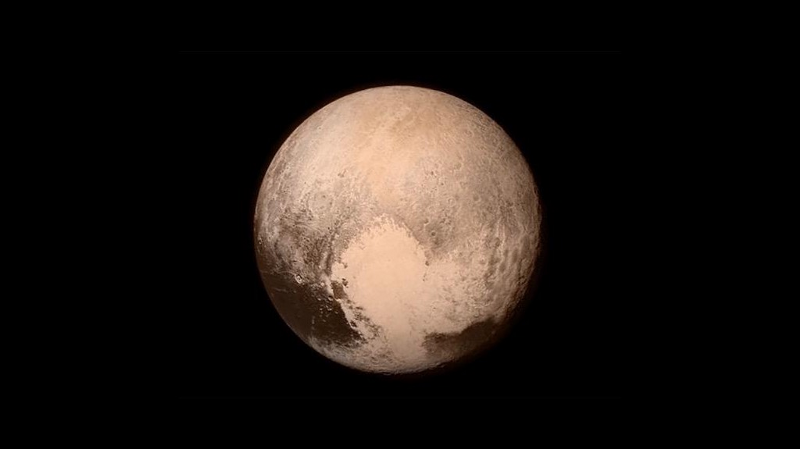Note: The Global Delusion Series is meant to be read in this order -
Timeline of Operations, NASA, Heliocentric Science, Hebrew Cosmology
When I think of NASA, I think of the exploration of space. I think about the incredible amount of effort it must’ve taken to get to the moon. I think about the heroic astronauts being rocketed off into space. In fact everything I believe about space and cosmology I owe to NASA… so how do I know NASA can be trusted? This is a question I had never thought about until recently and it is a very large question that holds a lot of weight behind it. The National Advisory Committee for Aeronautics (NACA) was founded in 1915. It would eventually be absorbed by the National Aeronautics and Space Act (NASA) in 1958 (if you haven’t read other articles in this series, 1958 was a very big year for “space exploration”…).
As of 2018, about 560 people have been in space. Of the 560 astronauts that made it into space, only 24 have been outside low Earth orbit (LEO). Low Earth orbit ranges from 99–1200 miles into the atmosphere. All 24 of these astronauts that made it outside low Earth orbit were all part of the Apollo missions between 1968–1972 including those that flew to the moon. That means for the last 50 years, no astronaut has flown outside of LEO (1200 miles from the Earth). This range is exceptionally low, especially when you consider how far the moon is (238,000 miles away from the Earth). So why has no one gone outside of low Earth orbit since the Apollo missions? Well one reason could be regarding the Van Allen radiation belts. These radiation belts surround the Earth and extend out between 400–36,000 miles above the Earth. Fortunately they were discovered in 1958 with a Geiger counter which counts ionizing radiation and counted radiation levels a thousand times greater than expected. Unfortunately however, this was bad news for sending humans into space, ionizing radiation has bad effects on human tissue resulting in one of three ways: cell death, cell repairs itself or cell mutation (very likely cancerous). It was also very bad news for the space equipment because of the vulnerability to this radiation:
"Our current technology is ever more susceptible to these accelerated particles because even a single hit from a particle can upset our ever smaller instruments and electronics," said David Sibeck, Van Allen Probes mission scientist at NASA's Goddard Space Flight Center in Greenbelt, Maryland. "As technology advances, it's actually becoming even more pressing to understand and predict our space environment."
-Studying the Van Allen Belts 60 Years After America's First Spacecraft
Clearly these issues had to have been circumnavigated for the Apollo missions to get to the moon, unfortunately the technology that got us to the moon was destroyed according to Don Petit (NASA astronaut). So it appears we have a critical issue with the Van Allen radiation belts keeping humans from exploring anything above low Earth orbit which we’ve resolved in the past (allegedly) but have destroyed the information that got us there to begin with. In an interview, Alan Bean (Apollo 12 astronaut, flew into space nearly 10 years after the Van Allen Radiation Belts had been discovered) revealed he had absolutely no clue as to what the Van Allen radiation belts were at all. How could this astronaut who had been to the moon 238,000 miles away in space have absolutely no knowledge of potentially the most critical obstacle to space discovery known to man after flying through it twice, there and back?
Another obstacle is heat. The thermosphere is a portion of the Earth’s atmosphere that ranges from 56–621 miles above the Earth. The temperature within the thermosphere ranges from 500–2000 Celsius. Here is a chart showing the melting temperatures of popular metals used in spacecraft.
The most popular metals used in spacecraft are titanium, aluminum and some vanadium. All of which are lower and within the melting range of the temperatures necessary to withstand flying through the thermosphere.
-Technology For Small Spacecraft
-What Are Spaceships Made Out Of
It’s interesting that so much of these spacecrafts can be made up of a metal (aluminum) with such a low temperature limit for its melting point (660 C). Even more interesting is that the external fuel tank is mostly made up of aluminum and rockets up to about 70 miles before falling back down to Earth. That’s about 20 miles within the thermosphere so how could the mostly aluminum made external tank withstand the extreme heat temperatures of the thermosphere? The external tank also holds hydrogen in it, hydrogen spontaneously combusts at 500 C, the minimum temperature of the thermosphere.
If we look at the pictures given to us from NASA, there are concerns that arise or perhaps consistency depending on how you look at it. Aside from the (alleged) photos taken from the Apollo missions, there have been no full shot of the Earth that hasn’t been tampered/edited. What we are used to seeing are composites or portions of the Earth taken and combined together into what we’re used to seeing.
What really blew me away was that they don’t even attempt to hide the fact that these are not real photos. Robert Simmon, the “Earth editor” is well known and even has a nickname as Mr. Blue Marble. If we have satellites all over in space that take pictures of planets much further away from us, why do we need these continued satellite composites of the Earth? Why can’t they give us actual photos of the Earth in its entirety? We should have numerous photos of the Earth if Apollo missions were able to snap one from just 28,000 miles away. Elon Musk’s starman is steady rocketing through space but how? Why hasn’t the car melted or completely frozen over and deteriorated by now? Why does Starman’s car still look in pristine condition after years rocketing through space? Why can’t we see any stars?
-A snapshot of the Starman camera feed, it appears we can see half the Earth and not a single piece of land in site? Where are the stars?
So there are a lot of reasons to question NASA. Am I really supposed to believe that Richard Nixon called the moon from a landline in 1969 when I can barely make a call on my cell phone in an elevator in 2019? How did we get video footage of the Apollo 17 spacecraft leaving the moon? Why did NASA willingly work with a known Nazi German Scientist (Wernher Von Braun) for the Apollo 11 mission? If we’ve already been to the moon, why is there an article headlined: Successful Orion Test Brings NASA Closer to Moon, Mars Missions that is dated July 2, 2019 and using the Orion spacecraft we talked about earlier on NASA’s own website? Here is the concluding remarks of a NASA document.
-Derivation and Definition of a Linear Aircraft Model (Page 30)
The statement is also in the second paragraph of the introduction of the document. If NASA truly believes the Earth and all planets are round, why would this even be written within their documentation? What situation would this information be pertinent? This is an official photo from NASA of Pluto:
It is very clear to me now that NASA has been lying to us. NASA made it to the moon with the computers being used in 1969 rocketing off an Earth rotating at 1,000 mph into space and successfully landed on a sphere moving at 2,288 mph and made it back to Earth all on the first try? I don’t think so… If we cannot trust NASA and everything we know about the cosmos is based off of what NASA has told us, then we need to rethink what we “know” about the cosmos and how we know these things. We need to dig much deeper beyond the limitations of our indoctrination to find what truth is being hidden and why.
Note: I stumbled across some youtubers that really challenged the difference of what I know and what I was indoctrinated with. Here’s a few of the videos if you’d like to check them out.
Martin Kenny: https://www.youtube.com/watch?v=cnc_X-oDWsE&list=WL&index=38&t=3s
ODD Reality: https://www.youtube.com/watch?v=S9i97_K9Sx8&list=PLm6Vq0bTTCDiPIX2ItdQTQGX7mXQXBxoV
Sources:
https://www.nasa.gov/centers/marshall/history/vonbraun/bio.html
https://www.nasa.gov/exploration/whyweexplore/Why_We_29.html
https://io9.gizmodo.com/the-strangely-true-connection-between-scientology-the-5978746
https://www.physicscentral.com/explore/action/radiationandhumans.cfm
https://www.whereisroadster.com/
https://www.nasa.gov/centers/goddard/about/people/RSimmon.html
https://www.nasa.gov/centers/marshall/history/vonbraun/bio.html
https://earthobservatory.nasa.gov/features/BlueMarble/BlueMarble_history.php
https://www.reference.com/science/spaceships-made-out-5f65179f02c245b6
https://www.nap.edu/read/2351/chapter/7#44
https://www.nasa.gov/returntoflight/system/system_ET.html
https://www.nasa.gov/mission_pages/sunearth/science/atmosphere-layers2.html
https://www.theguardian.com/science/2018/nov/19/space-how-far-have-we-gone-and-where-are-we-going
https://www.nasa.gov/feature/new-horizons-top-10-pluto-pics
https://www.pbs.org/wgbh/nova/article/pluto-shows-its-true-colors/

![1_Cso3xwqU6bPZv0wMnlkGAg[1] Wernher Von Braun grave](https://blaksimba.com/wp-content/uploads/2019/10/1_Cso3xwqU6bPZv0wMnlkGAg1.jpeg)







